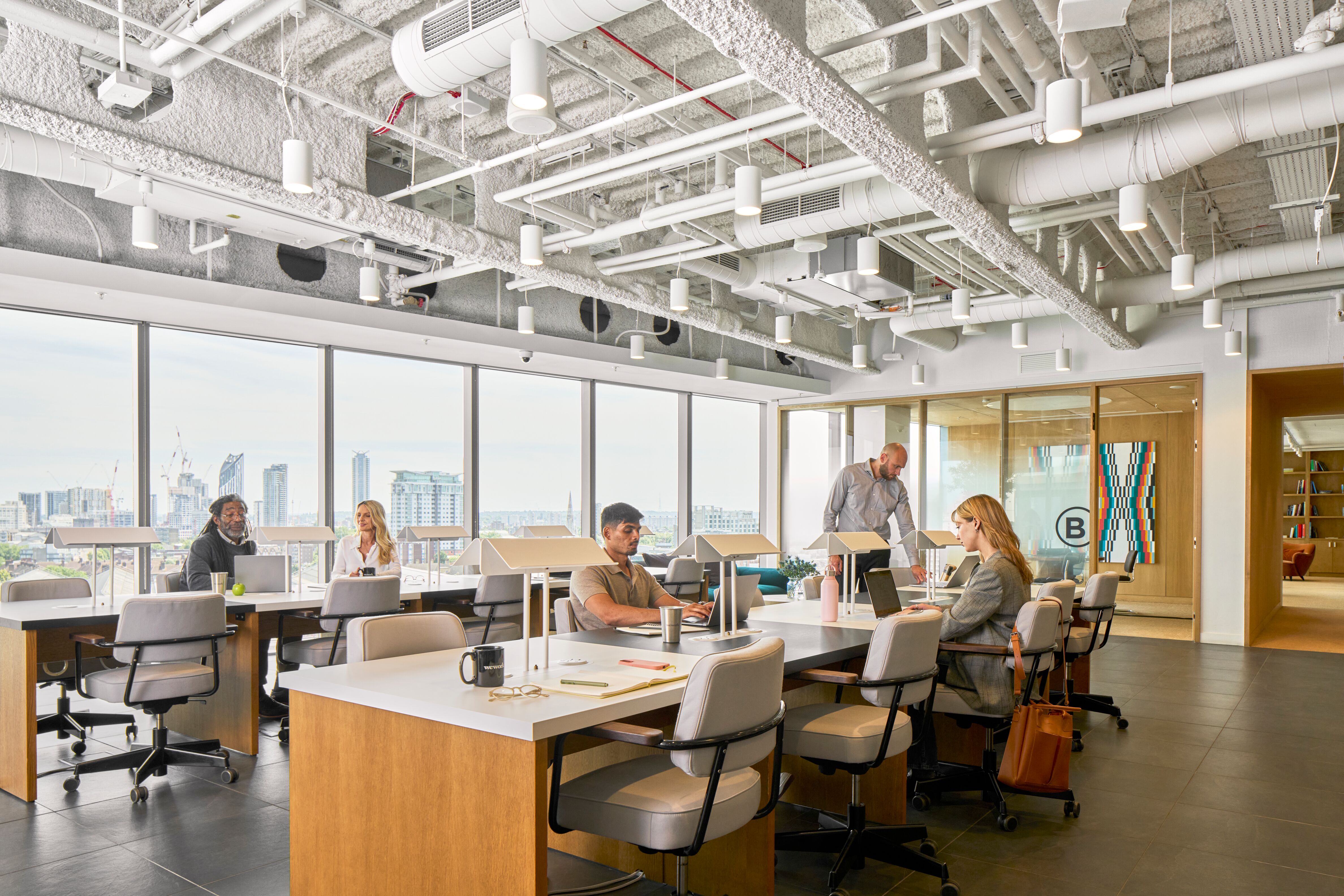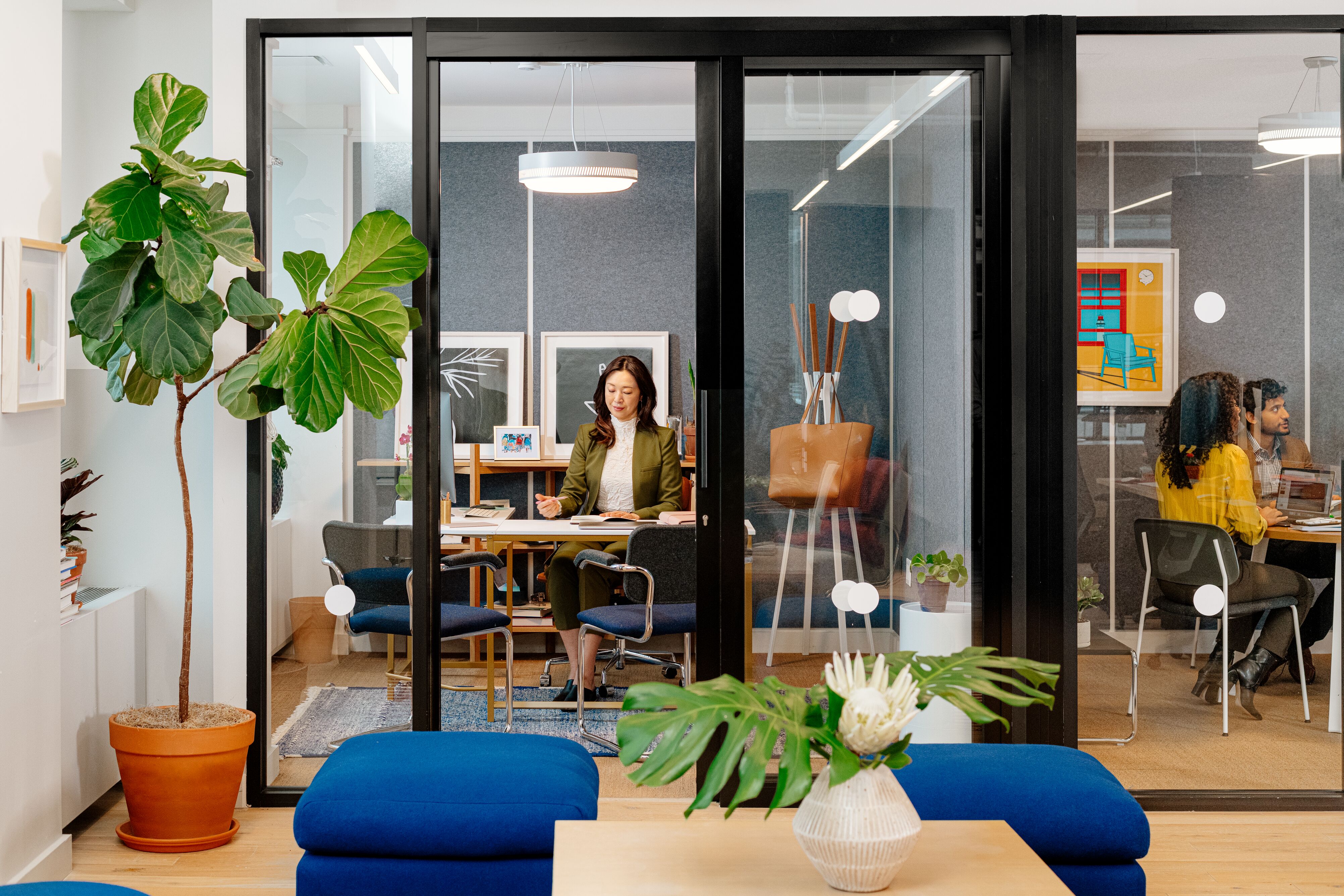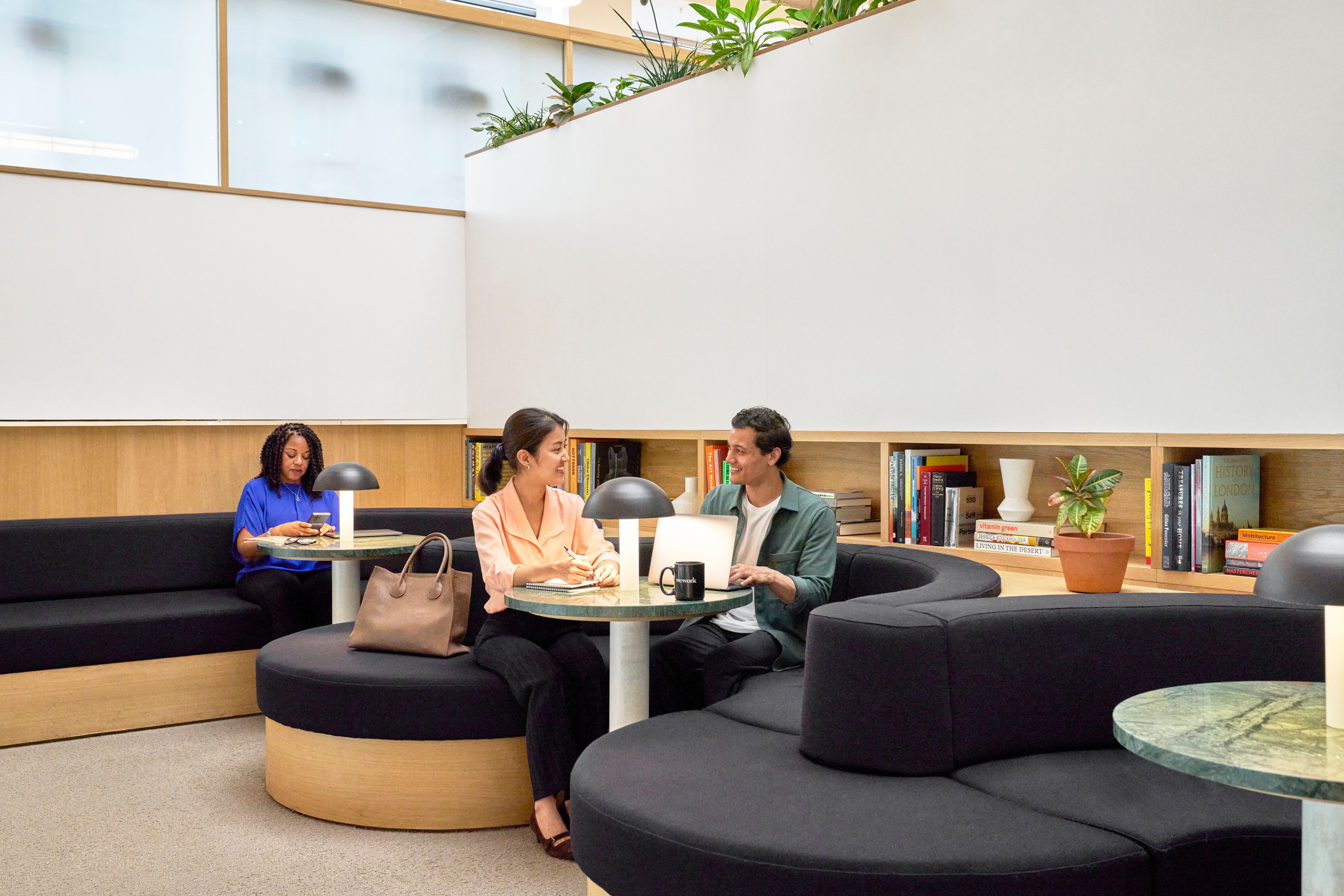Collaboration is the foundation of getting stuff done in the workplace. Meeting with others, sharing ideas, brainstorming, gaining buy-in, and aligning on an execution strategy is paramount to driving your business forward.
Collaboration ranges from having a quiet chat with one other person to generating ideas as a team or videoconferencing with colleagues across the world. In most offices, these activities take place in conference rooms. Yet the best collaboration spaces are so much more than a few chairs around a table encased between four walls.
Since working together is critical and comes in many forms, conference rooms need to be both diverse and able to inspire employees to do their best work. Having flexible workspaces where employees have the freedom to work according to their needs and comfort level is essential to keeping productivity levels high—not to mention attracting and retaining top talent.
That’s why offices should have a variety of meeting spaces of different sizes and amenities. Designers should be mindful not to overstaff a space with, for example, small three-person rooms or large 10-person ones. The optimal workspace has a healthy mix of both. Here are some of the ways WeWork creates conference rooms that foster collaboration and productivity.
Different-sized conference rooms for various needs
Since teams undertake a variety of activities in conference rooms—from group brainstorms to one-on-one meetings—the ideal space for one of these meetings will not necessarily work for others. By offering rooms of various sizes, with different equipment, you can cater to all of these possibilities.
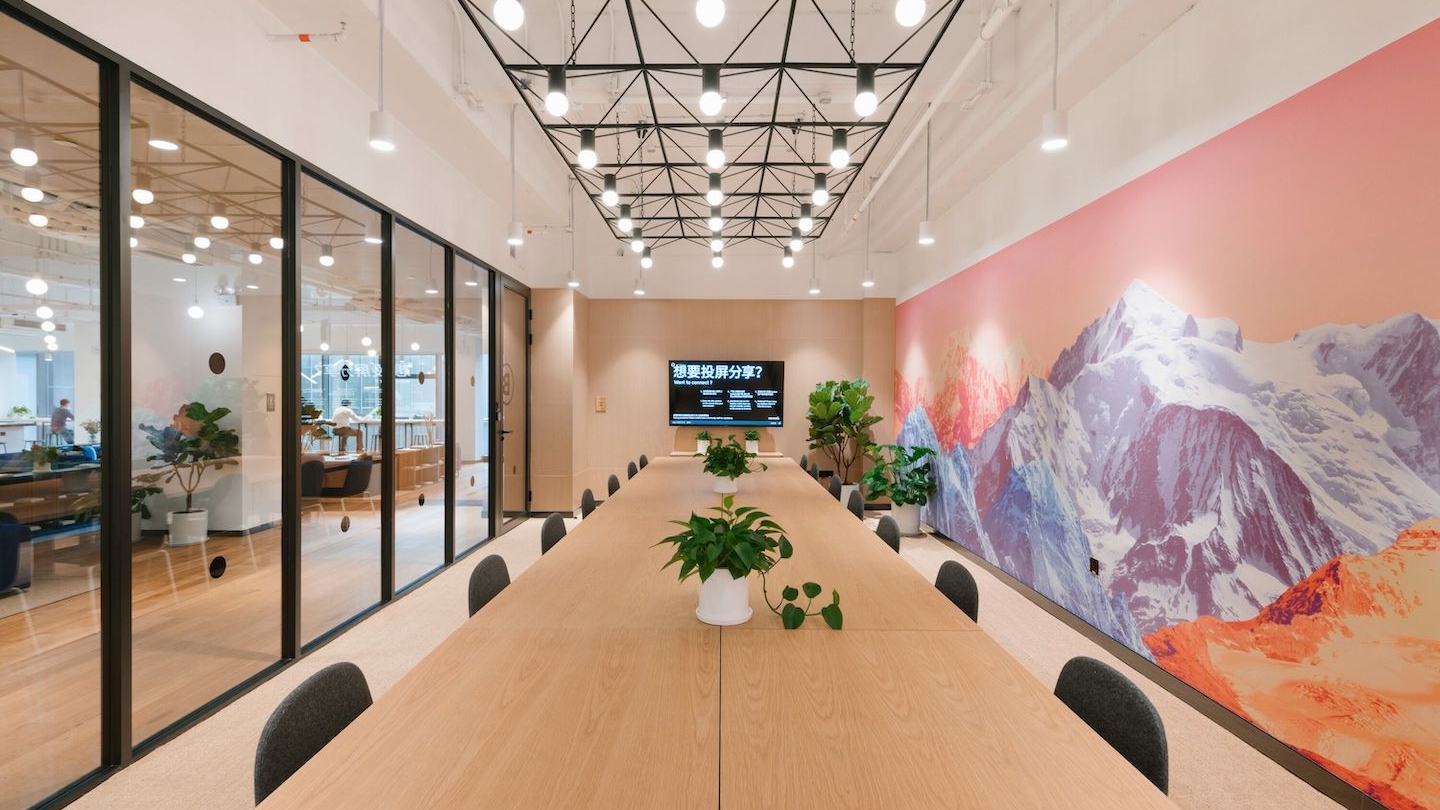
Large conference rooms
Some meetings need to be attended by employees across departments and levels. For these, a big room is necessary. This boardroom in WeWork EBA Center in Shanghai, China, can accommodate more than a dozen people and has videoconferencing technology in place for team members to dial in from elsewhere.

Small conference rooms
On the other hand, sometimes you may prefer a more intimate space. This room in WeWork Blvd. Antonio L. Rodriguez 1888 in Monterrey, Mexico, is perfect for a small group. Colorful stools and a high table make the space feel unlike a typical conference room.

For meetings that take the form of a lecture or presentation, a classroom-style room might be perfect. To cater to those, WeWork offers several of these types of rooms, such as this one in WeWork Reforma 26 in Mexico City, Mexico, that is outfitted with a projector.
Meeting rooms equipped with collaboration tools
A functional conference room should come with tools that make collaboration as easy as possible. Those tools can be low-tech, such as markers and a whiteboard for outlining, or high-tech, such as software to videoconference into the room or technology that makes it easier to book rooms.

With a rise in distributed teams spread out across many locations, the ability to videoconference into meetings is increasingly important. That’s why many WeWork conference rooms come with screens and videoconferencing technology readily available, such as this one in WeWork Salesforce Tower in San Francisco.

For brainstorming sessions, a whiteboard can be sufficient for your team to jot down notes and make connections. Many WeWork conference rooms, such as this one in WeWork 1 Belvedere Dr in Mill Valley, California, come with these mounted on the wall, with markers handy.
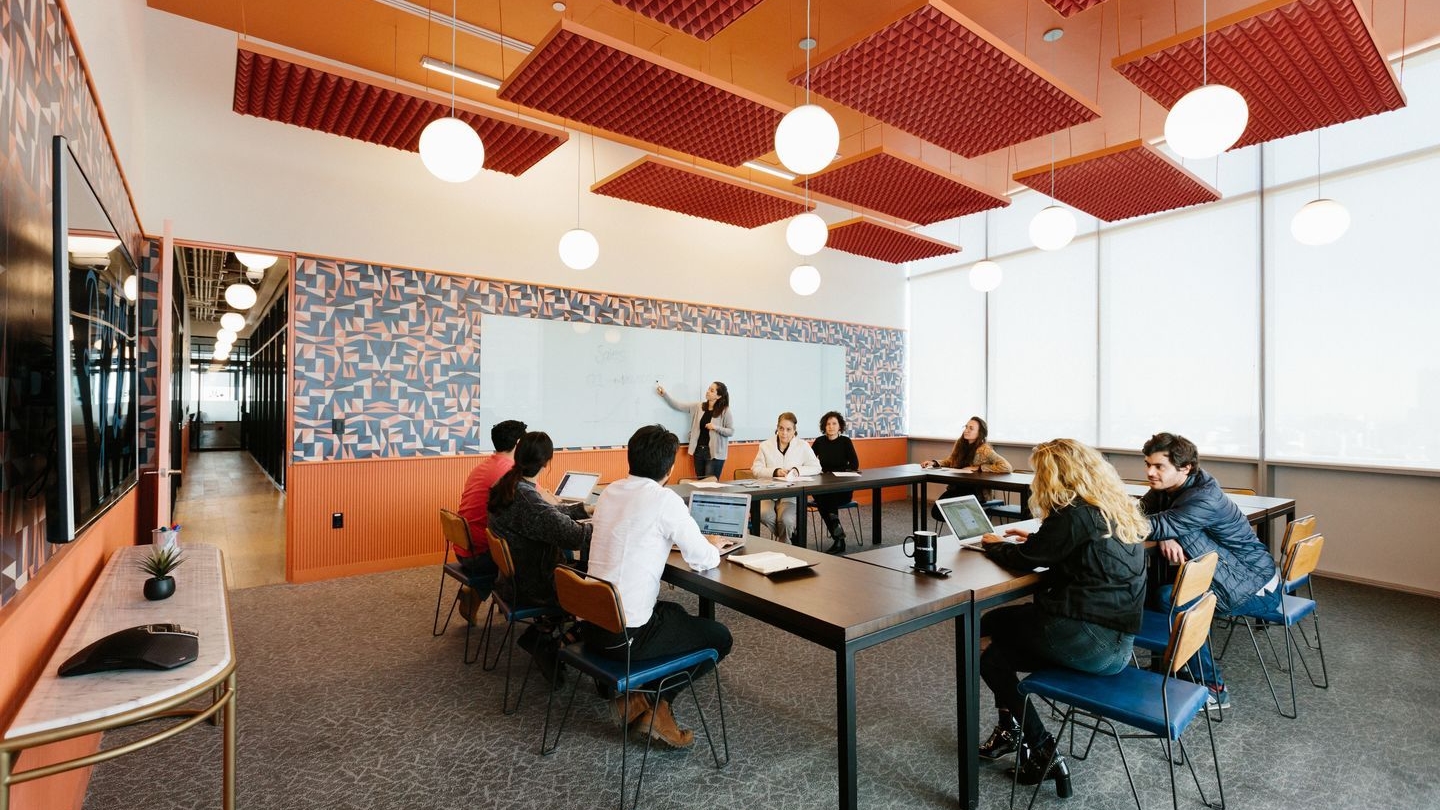
Ideation sessions or presentations can take place in either small, intimate settings or large ones. To accommodate a larger group, a room facing a whiteboard with a large table, or several tables arranged classroom-style, as in this room in WeWork Cervantes in Mexico City, Mexico, is conducive to larger groups’ needs.
Conference rooms without tables
Not all collaborative activities necessitate a table. Sometimes, a quiet space to have a relaxed, private chat is where teamwork happens. As an added benefit, spaces that are comfortable, such as employee lounges, may reflect a company culture of showing your employees how much you value them.

This conference room in WeWork Nogizaka in Tokyo, Japan, has a few low chairs facing each other in a space clad in light plywood. The space is flanked by floor-to-ceiling bookshelves, which creates the impression of being in a welcoming library or living room.
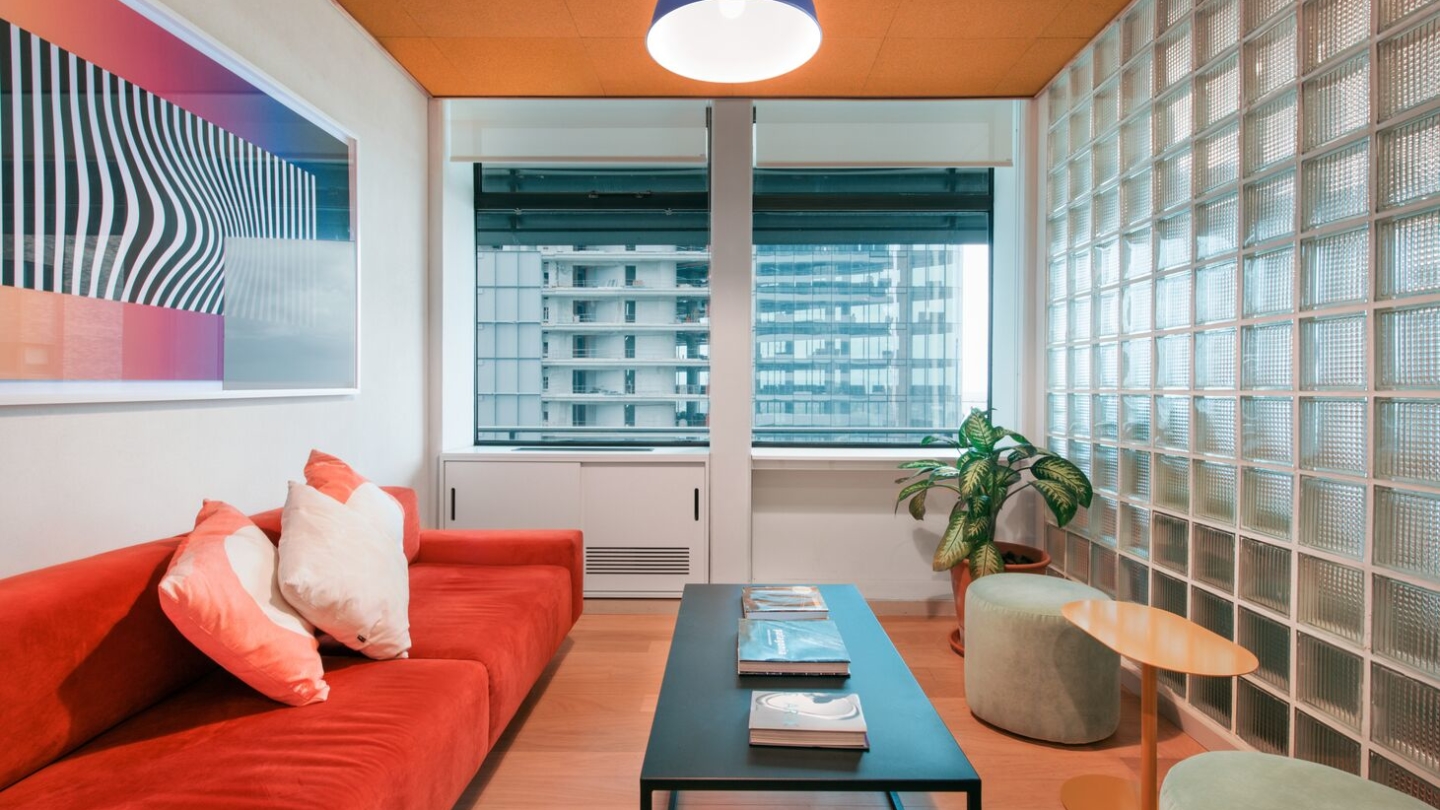
A long, plush couch and low seats make up this conference room in WeWork Ing. Enrique Butty in Buenos Aires, Argentina. A large colorful piece of art and a painted ceiling brighten up the space while frosted glass makes the room feel relaxing.

This meeting space in WeWork 11 Sanlitun Lu in Beijing, China, is comprised of a few couches where your team can sit and have a formal or informal discussion. It’s separated from the outside not by glass walls and a door but by lightweight, colored material that makes the space feel cozy and intimate while offering a certain level of privacy.

Just as not all conference rooms need a table, not all rooms need to be encased in glass walls. In WeWork Iceberg in Tokyo, Japan, this conference room is inside concrete walls, lending a modernist vibe to the space reminiscent of Japanese architect and Pritzker Prize winner Tadao Ando, who’s famous for his use of concrete.
As collaboration takes place in many forms, the spaces that accommodate it should be diverse as well. Having a mixture of offerings gives your employees the flexibility to choose whatever works for them. This has been shown to lead to happier, more engaged workers. And as their comfort level and productivity rises, so too does your business.
This article was originally published on August 6, 2019, and has been updated throughout by the editors.





